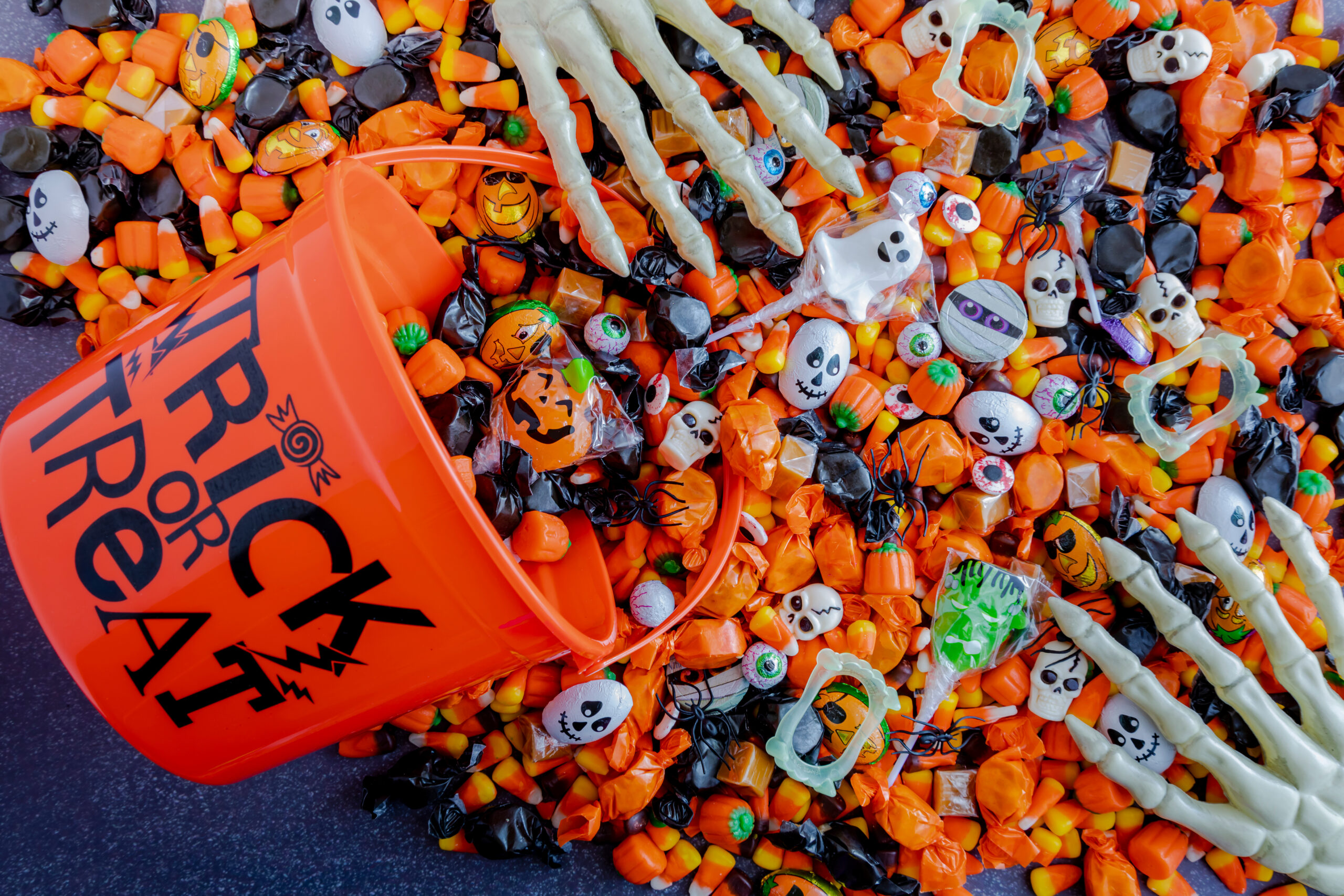**Don’t Get Tricked by Your Treats This Halloween**
Americans buy roughly 748 million pounds of candy every Halloween, and more than half of parents admit to swiping a few pieces from their kids’ stash. But there’s more to fear than just a trip to the dentist. Experts warn that certain ingredients in chocolates and candies can clash with medications and medical conditions, leading to some truly frightful side effects.
Before you tear into another fun-size bar, here are five ways your Halloween haul could turn your health into a horror show if you aren’t careful.
—
### The Dark Side of Chocolate
Chocolate treats are consistently among the top sweets handed out on Halloween. However, for people taking monoamine oxidase inhibitors (MAOIs)—a type of antidepressant—they could come back to haunt them.
MAOIs interfere with the body’s ability to break down certain substances, including tyramine, a naturally occurring compound found in many foods and drinks.
“When someone on MAOIs eats tyramine-containing foods such as chocolate, tyramine can build up to dangerous levels,” explains Dipa Kamdar, senior lecturer in pharmacy practice at Kingston University, writing for *The Conversation*.
That buildup can send blood pressure soaring—a sudden, serious emergency that can be deadly if left untreated. To play it safe, Kamdar recommends checking in with your doctor or pharmacist before digging in, since the risk depends on your MAOI regimen, the type of chocolate, and your personal sensitivity.
—
### A Caffeinated Curse
Chocolate also contains caffeine, a stimulant that can clash with medicines meant to calm you down or help you sleep, potentially muting their effects or triggering frightening reactions.
For example, the caffeine in chocolate can supercharge stimulant medications used to treat ADHD, like Ritalin and Adderall, increasing the risk of side effects such as a racing heart, higher blood pressure, jitteriness, and anxiety.
It can also sabotage sedatives like Ambien and Lunesta, dulling their sleep-inducing powers.
But chocolate’s most chilling threat may be its effect on blood clotting. Indulging while taking blood thinners like Plavix or warfarin can make their effects stronger or unpredictable, raising the risk of bruising and bleeding.
—
### The Licorice Trap
Licorice may have clinched the top spot for “most-hated” Halloween candy, but its polarizing taste isn’t the only thing to fear.
“Black licorice contains glycyrrhizin, a natural compound that acts like the hormone aldosterone,” explains Kamdar. “This can cause the body to hold on to sodium and lose potassium, leading to fluid retention, increased blood pressure, and electrolyte imbalances.”
That chemical cocktail can take a serious toll on your heart. The FDA warns that eating as little as 2 ounces of black licorice daily for two weeks could trigger irregular heart rhythms—especially in anyone over 40.
“If you already have heart disease or high blood pressure, then be a little more aware of how you’re feeling if you eat this kind of licorice,” advises Katherine Patton, registered dietitian at the Cleveland Clinic. “Stop eating it if you think you notice any type of irregular heartbeats.”
Glycyrrhizin can also pose extra danger for those on diuretics, antiarrhythmic drugs, or blood pressure medication, as well as people with kidney disease. Some studies even suggest licorice may mimic MAOIs in the body, potentially amplifying their side effects.
—
### Not-So-Sweet Treats
Candy companies often market sugar-free sweets as a healthier option, but many hide their own scary side effects.
Aspartame, for example, can cause a toxic buildup of phenylalanine in people with the rare genetic disorder phenylketonuria, potentially damaging brain cells.
This widely used artificial sweetener may also raise tyramine levels, which can clash with MAOI antidepressants and trigger dangerous spikes in blood pressure, Kamdar notes.
Sucralose, another common sugar substitute, carries its own chilling risks. Some studies suggest that high consumption can interfere with certain cancer immunotherapies by altering the gut microbiome and reducing the body’s production of arginine—an amino acid vital for immune cells that fight cancer.
—
### Dangerous Dyes
The bright reds, yellows, and blues that make your favorite gummies and candies pop might be hiding a not-so-sweet side.
“Those vibrant hues often come from synthetic dyes such as Red 40, Yellow 5, and Blue 1,” Kamdar writes. “These dyes have been linked to hypersensitivity reactions including hives, wheezing, and itching.”
People allergic to aspirin may be especially prone to reacting to Yellow 5. You might want to think twice if you’re taking antihistamines as well.
While the dyes don’t directly clash with medications, they can prompt your body to release histamines, potentially fueling the very symptoms the drugs are meant to calm—or sparking allergic reactions on their own.
—
**This Halloween, enjoy your candy cautiously. When in doubt, consult your healthcare provider to keep your treats from turning into a health nightmare.**
https://nypost.com/2025/11/01/health/5-ways-halloween-candies-can-interact-with-your-medications/



